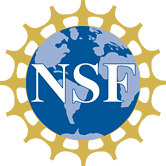Chemistry Seminar
Dr. Katherine Heckman, Research Biologist
USDA Forest Service, Northern Research Station
Friday July 24, 2015
Chem Sci Room 101
3:00 pm
Title: Soil Organic Matter Matters: Why is there so much carbon underground?
Abstract:
Soils contain roughly twice as much carbon as the atmosphere, and 1.5 times as much as the atmosphere and aboveground vegetation combined. Yet the mechanisms regulating the stability of this massive carbon pool remain the largest uncertainty in terrestrial carbon models. To provide context, a brief review of the soil carbon cycle and mechanisms of soil carbon stabilization will be given, followed by the results of a recent investigation into how mineral crystallinity influences soil carbon stability.
Bio:
Kate Heckman earned her PhD in Soil Science at the University of Arizona in 2010, and since then has been working for the USDA Forest Service. In addition to doing basic research involving soil, Kate also runs the Radiocarbon Collaborative, a research initiative focused on making radiocarbon analyses more accessible to earth systems researchers. Kate will be moving up to Houghton this fall where she will continue her research in the Forestry Sciences Laboratory at Michigan Tech.
